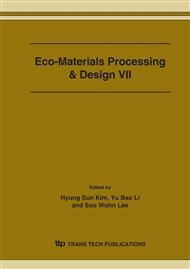p.786
p.790
p.794
p.798
p.802
p.806
p.810
p.814
p.818
Comparison of Silicon Coatings Deposited by Vacuum Plasma Spraying (VPS) & Atmospheric Plasma Spraying (APS)
Abstract:
In this work, silicon coatings were deposited using VPS and APS technologies. Their structure and composition were characterized using XPS, SEM, and XRD. The porosity and surface-roughness of coatings were evaluated. The results showed that the VPS silicon coating possessed lower porosity compared with the APS silicon coating. The APS silicon coating surface was almost all covered by many small particles whose size is about 100 nm. The Si 2p XPS spectra indicated that silicon oxide existed in both coatings. The oxidation may have occurred during the plasma spray process. However, the VPS process could inhibit silicon from being oxidated.
Info:
Periodical:
Pages:
802-805
Citation:
Online since:
March 2006
Authors:
Keywords:
Price:
Сopyright:
© 2006 Trans Tech Publications Ltd. All Rights Reserved
Share:
Citation:


